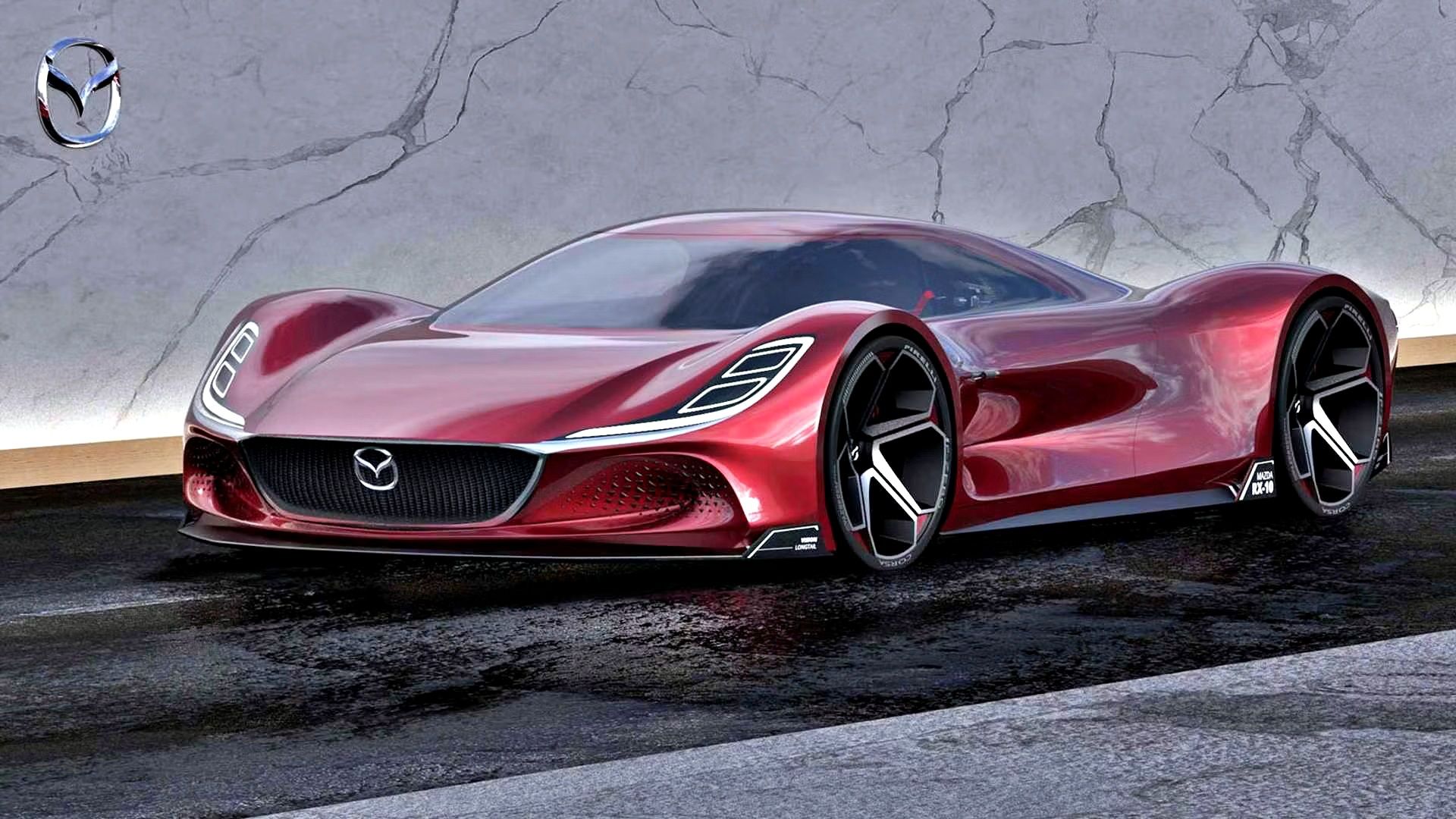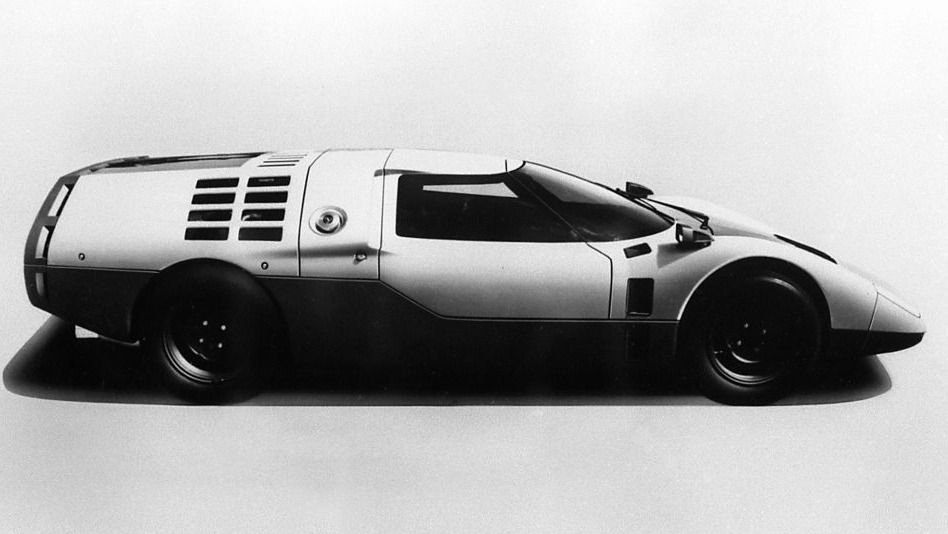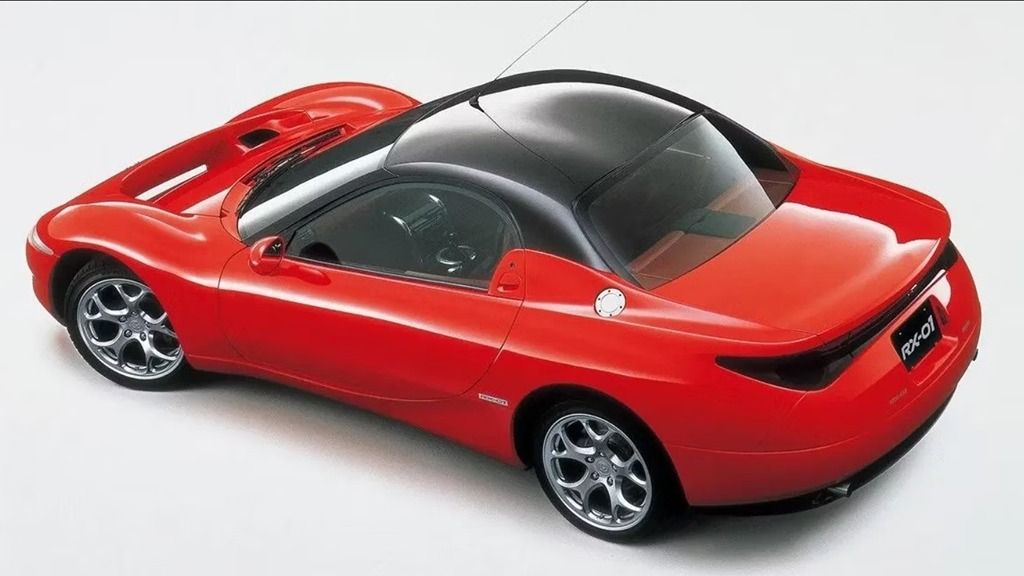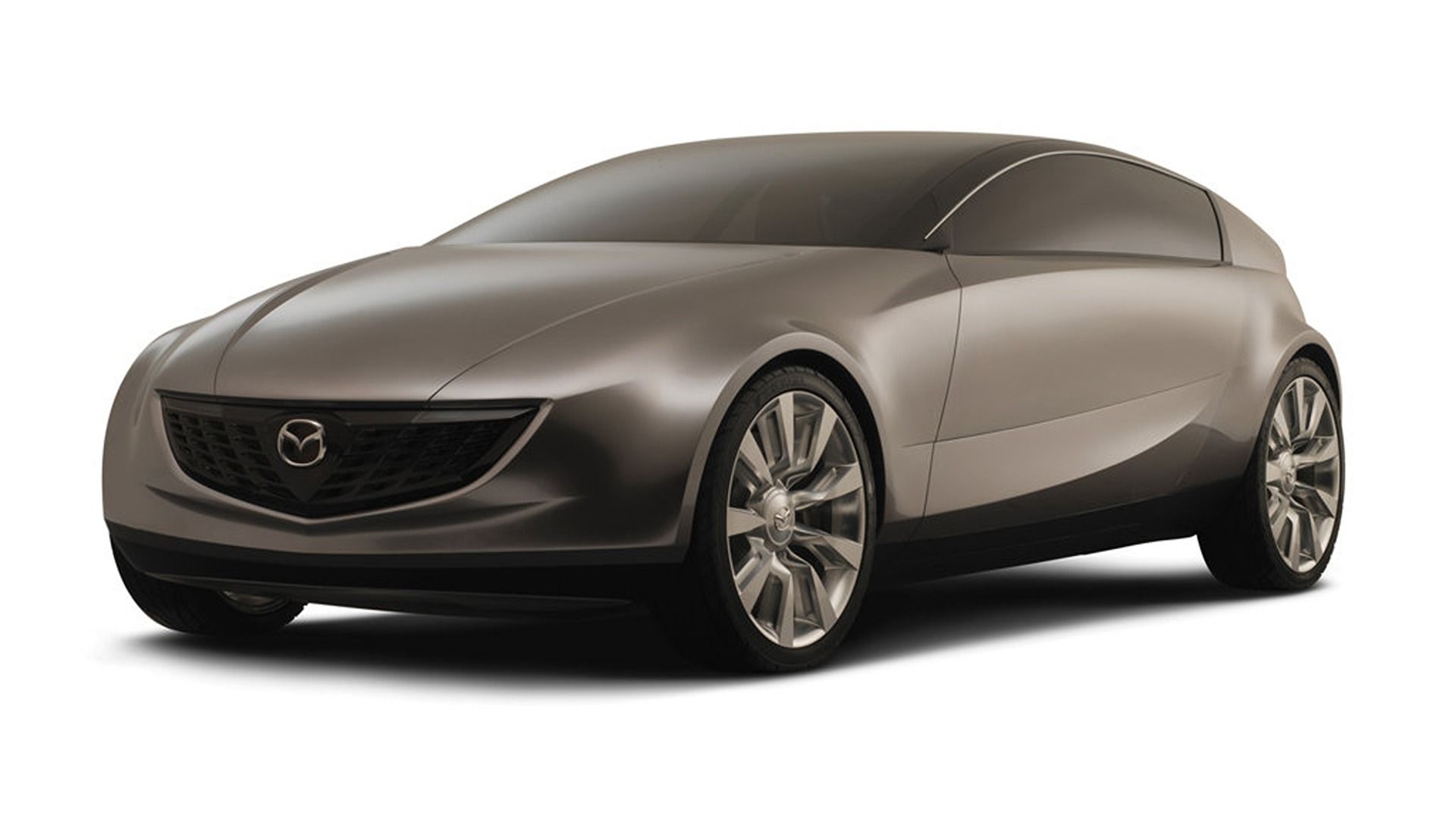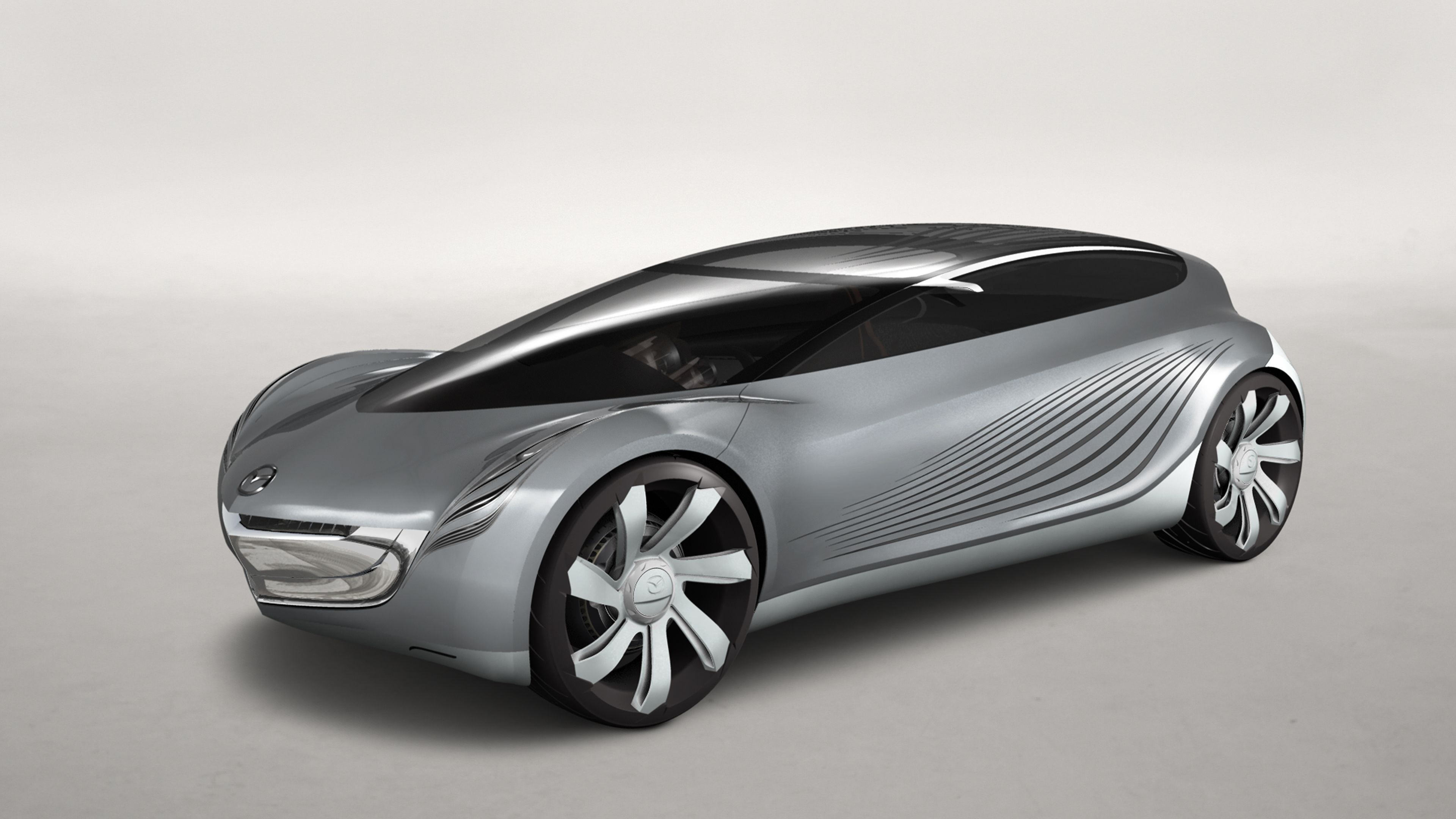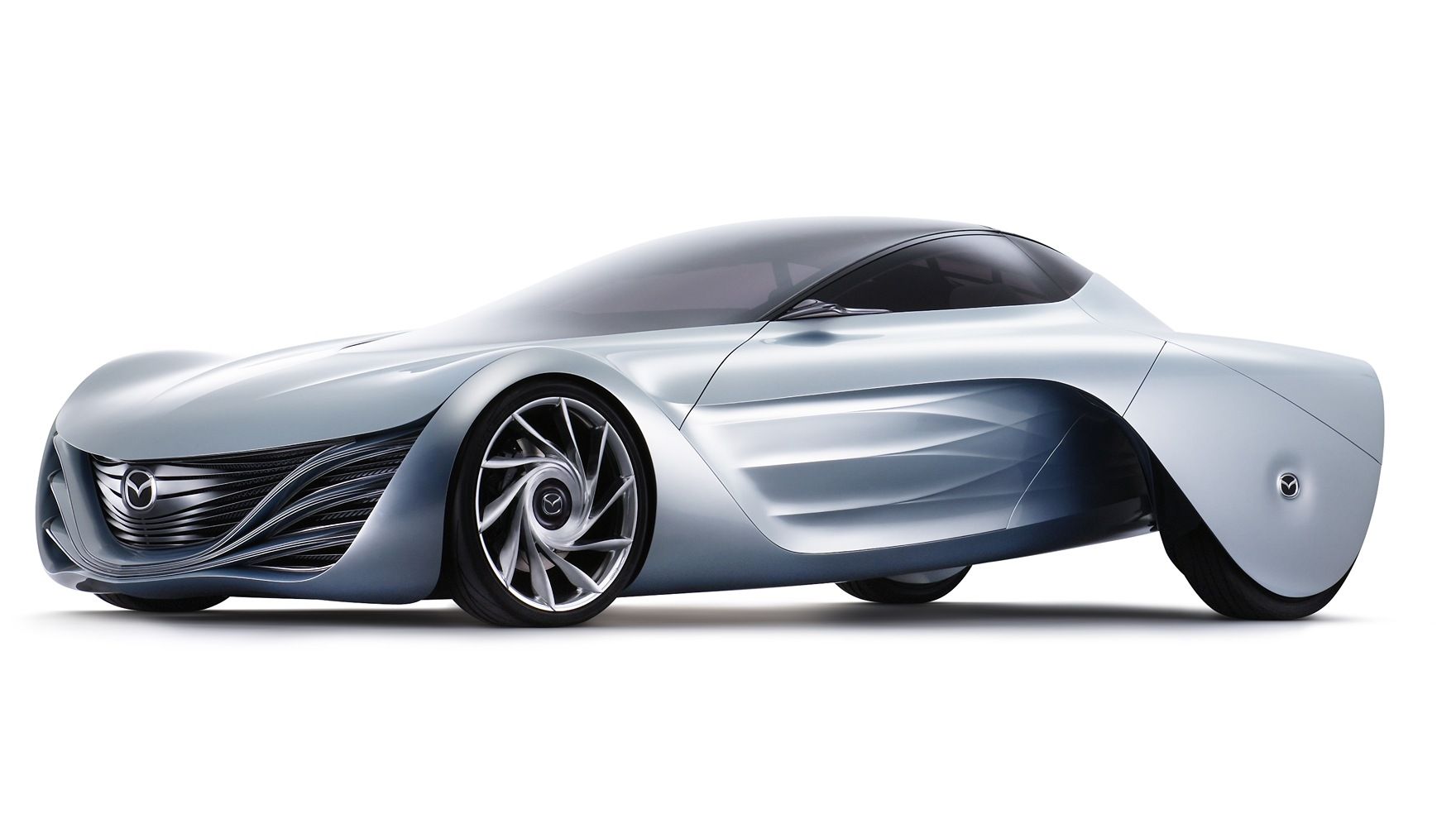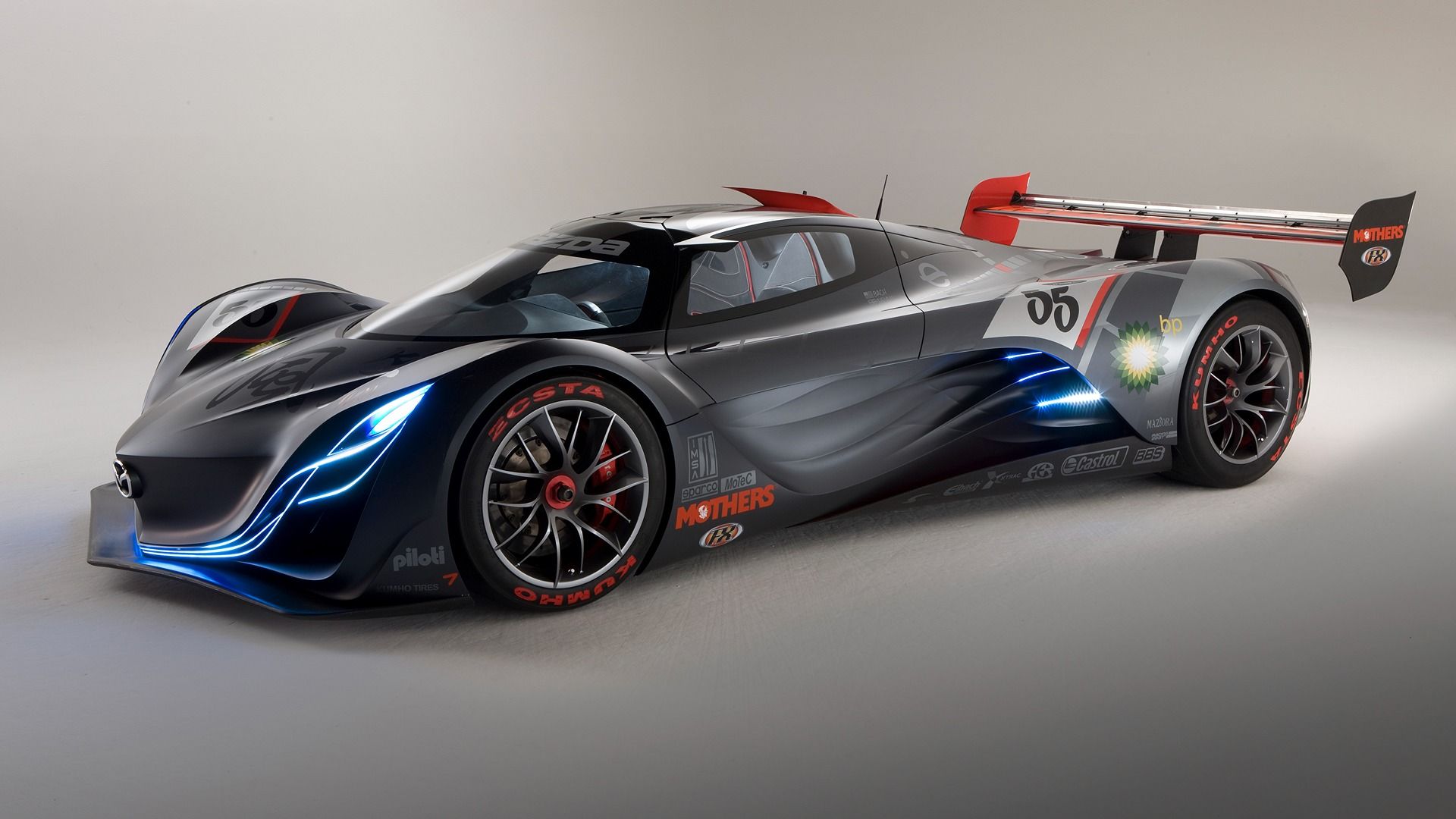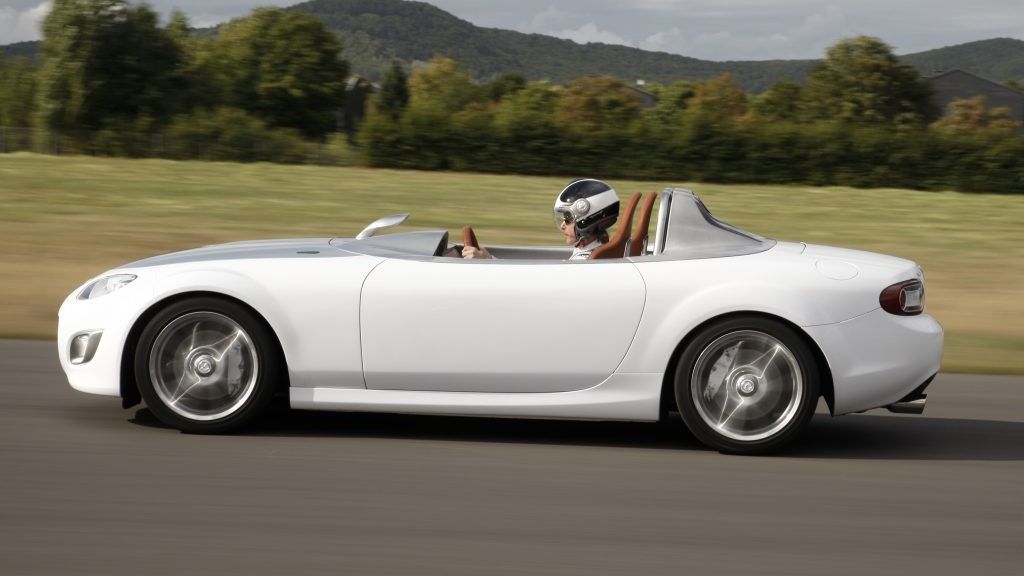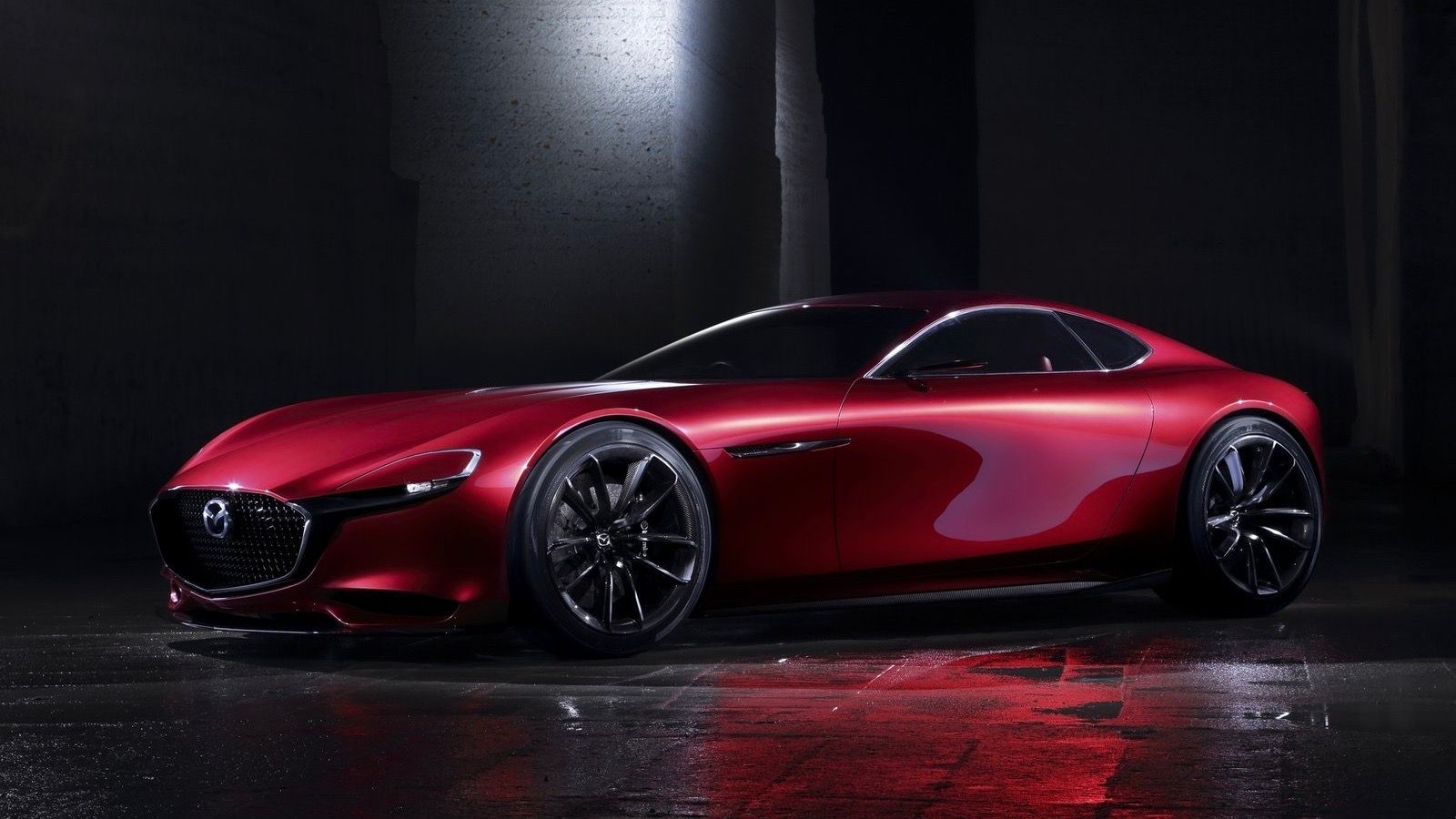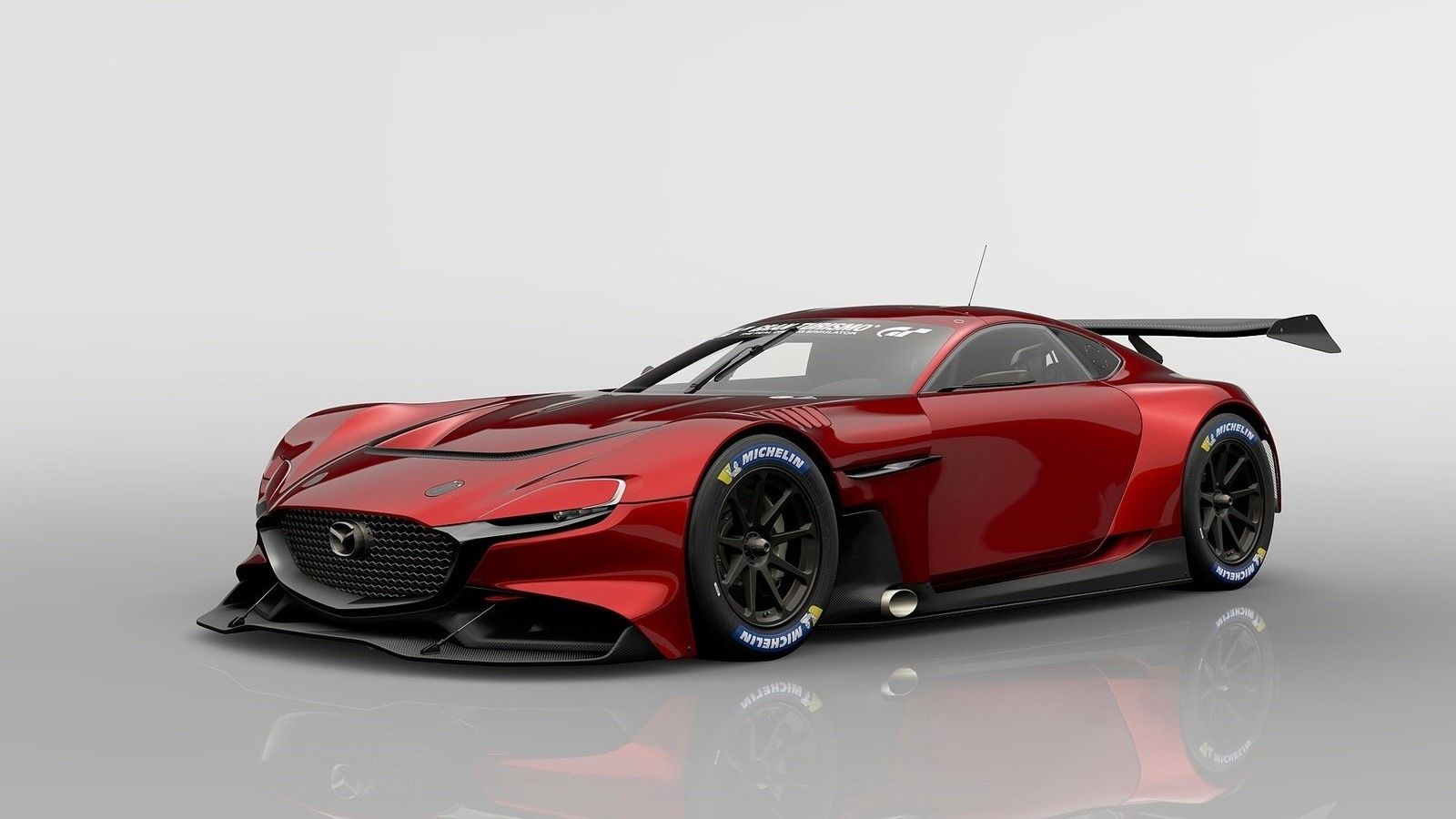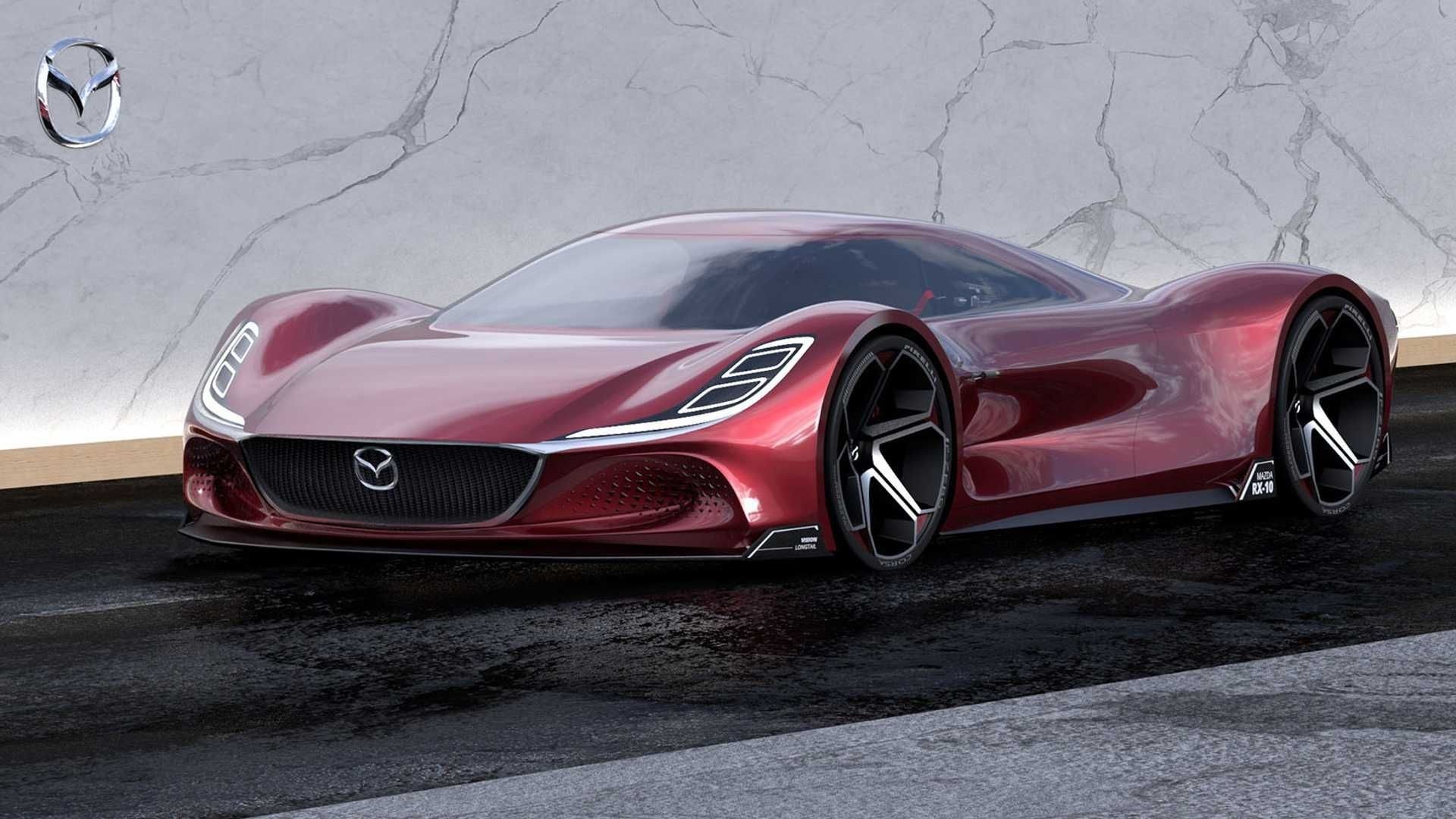Mazda has always been known as a "cool kid" among Japanese auto manufacturers, who were responsible for some of the most beloved JDM legends that have ever managed to grace our roads. On that note, Mazda revealed its first passenger vehicle more than 60 years ago and was always considered somewhat of an oddball brand, ready to experiment with something extraordinary. And let's not forget that hunger for curiosity for innovation and experimentation, which led to the widespread adoption of the rotary engine by Mazda, with street legends like the Mazda RX-7 or racecars like the Mazda 787B.
That said, Mazda was always tinkering with something. They have coupled affordability and driving fun with the MX-5 Miata and made suicide doors a thing again in the new millennium with the RX-8. Still, the Japanese automaker is much more than just a successful car company with a few bright ideas. They have also come up with several awesome prototypes and concept cars that have helped influence their engineering and design teams, ultimately showing on their road-going cars. That said, this article will focus on some of the craziest and most influential Mazda concept cars that never hit the road.
We've gathered data from Mazda and have referenced reputed sites like Hotcars and Top Gear to put this list together of Mazda concept cars.
10 1970 Mazda RX-500
By the 70s, Mazda had been using the rotary engine with commercial success for over a decade. To showcase their design and engineering prowess, they showed the world the über-futuristic RX-500, which was more or less a safety demonstration at first. More specifically, the concept featured multicolored lights at the rear that signal with different colors based on whether the car was braking, accelerating, or cruising.
Fortunately, the mid-engined supercar concept wasn't just a safety study. The two-rotor-modified 10A rotary engine produced 247 horsepower and revved up to an astonishing 15,000 RPM. Also, it featured two gullwing doors, which only added to the futuristic sci-fi look. Unfortunately, the concept didn't endure, but the little matchbox model based on it managed to outlive the RX-500 and even immortalize it among collectors.
9 1995 Mazda RX-01
The RX-01 made its first appearance in 1995, and back then, it was a hands-on demonstration of what Mazda wanted from the RX-7, a model that by then had become a hefty, GT-like sportscar. What Mazda ultimately wanted was to get back to the roots and create a light fun-to-drive, responsive, and speedy little sportscar.
The RX-01 was a much lighter and simpler concept than the current RX-7, and the basic idea was that the RX-01 would ultimately replace the third generation of the RX-7. As we know by now, that never happened, and the RX-7 was replaced by the RX-8, which, just like both its predecessor and the RX-01, came with a rotary engine, but it definitely followed the GT-like philosophy. Still, some say that the RX-01 could have been the perfect rotary Miata that sadly never happened.
8 2005 Mazda Senku
Mazda showcased the Senku at the 39th Tokyo Motor Show. The brand wanted to highlight the revolutionary rotary engine design, which was linked together with a hybrid drivetrain. The sleek and powerful design language offered something that was somewhat a departure from what Mazdas looked like back then, yet, nowadays, especially the lines of the car's front can be observed in several of their lineups, or there's at least a solid resemblance.
The concept also featured an ultra-long wheelbase, sliding, electric-powered doors, and the next-gen 13B engine coupled with a hybrid unit that promised to achieve a higher power output while keeping fuel consumption low. The Senku also had a 50-50 weight distribution in the rear and the front, with a low center of gravity, making it an ideal driver's car, even if it never made production.
7 2006 Mazda Nagare
The Nagare concept hit the scene in 2006 and was the dream of Mazda's U.S. design department. Their initial vision was to show the world what a sportscar could look like in 2020. And, while sports coupes and supercars don't exactly look like the Nagare, it does resemble modern crossovers, which are the most popular vehicle options out there nowadays. That said, while they were off a bit, they did manage to predict the future trend of sporty and small crossovers.
More specifically, the Nagare was created to have the form of an urban cruiser and the soul of a true sportscar. Some argue that this principle managed to manifest in one of their most popular models, the CX-30, which is among the most unconventional models in the compact crossover segment.
6 2007 Mazda Taiki
Probably one of the most ground-breaking design concepts any car manufacturer has ever dreamed of, the Taiki introduced a new vision for the sportscars of tomorrow. The two-door coupe concept was introduced in 2007, with its design guided by the concept of "flow," creating something that resembles airflow and combines the fine lines of Japanese robes: traditional clothing in the country.
The front engine, rear-wheel Taiki used Mazda's next-gen RENESIS rotary engine, with a double-clutch, seven-speed gearbox. Even though the Taiki (the fourth car in Mazda's Nagare concept series) was a design study, it promised some engineering potential as well, as the RENESIS 16x rotary engine was planned to replace the 13B engine, then powering the RX-8. As we clearly see now, Mazda never took either the engine or the design study on the road.
5 2008 Mazda Furai
This futuristic Mazda might just be one of the most interesting concepts from an Asian automaker. The racecar prototype was introduced in 2008, creating quite the hype, but interestingly, the car got out of the limelight in the blink of an eye and, more or less, left to be forgotten. Or, more specifically, that is what Mazda would want to happen if it wasn't for the filming crew of Top Gear Magazine.
While wanting to shoot a promotional video for the series, the new Furai had a pretty disgraceful accident: the car burned to the ground on the Top Gear test track even before anyone from the fire crews was able to reach it. Following the accident, Mazda moved the remains of the Furai back to Japan without making a fuss about it. Five years later, when everything cooled down (pun intended),Top Gear revealed the accident, and with that, pretty much sealed the fate of this racing concept car.
4 2009 Mazda MX-5 Superlight
The Superlight was a 2009 concept that meant to emphasize what the MX-5 did the best - being lightweight and handling like a charm. It was initially created to celebrate the 20th birthday of the critically acclaimed roadster and did that with style. The little Mazda had no windshield or roof, carbon fiber seats, no air conditioning, carpeting, fan, or sound insulation. The lowered car came with Bilstein coilover shocks and larger disc brakes.
The power was delivered by the Euro-spec MX-5 1.8-liter four-cylinder, enough to generate 125 horsepower and 123 pound-feet of torque. Overall, the car's curb weight was around 300 pounds less than the American-spec MX-5, weighing in at around only 2200 pounds, enabling the sporty little Mazda to reach 60 mph from a standstill in 8.9 seconds, while fuel economy improved to a whopping 37 MPG.
3 2015 Mazda RX-Vision
Let's not forget that Mazda was the only mainstream automaker that was able to deliver mass-produced, working rotary engines to the market. On that note, Mazda didn't only offer it in their economy or entry-class vehicles. Instead, the Japanese carmaker featured the rotary engine concept on their highly successful and sought-after performance cars and thoroughbred racing machines. The Mazda RX-Vision was built on the foundations of that very racing pedigree and sheer performance driving.
The concept, introduced in 2015, featured the brand's unique KODO design and aimed to push the rotary engine and front-engine-rear-wheel-drive concept to its limits. The design language pushed the boundaries of modern car design while still retaining the styling cues that made Mazda sportscars so iconic. The car also featured the modern and lightweight SKYACTIV-R engine, which would address the problems related to fuel economy, reliability, and emission concerns of previous rotary engines.
2 2020 Mazda RX-Vision GT3
While this concept pretty much looks like an attempt from Mazda to return to the track, the RX-Vision GT3 was actually created for a racing game, more specifically for the Playstation-exclusive Gran Turismo, which featured a class of virtual concept cars under the "Vision" category. In the game, the RX GT3 would race under FIA's GTA3 category, and some might have taken this as a hint back in 2020 that Mazda would return to racing, but unfortunately, it didn't.
On the other hand, the RX-Vision GT3 was based on another concept car, named Mazda RX-Vision (pretty self-explanatory stuff), which was introduced five years earlier at the Tokyo Motor Show in 2015. By the looks of it, the RX-Vision GT3 had all the necessary modifications needed for GT3 racing, with the giant wings, diffusers, and body kit, fooling even the more seasoned car enthusiasts. Still, the RX-Vision GT3 remains only a dream, which, even though virtually, you can drive.
1 2020 Mazda RX-10 Vision Longtail
Last but not least, here's a great example of how Mazda likes to tease its fans. The RX-10 Vision Longtail was unveiled by the brand in 2020, but it was the brainchild of Maximilian Schneider, an exterior designer at Mitsubishi Motors Japan. He created the render that would make massive waves among Mazda fans, who thought that this would mean the brand's return to racing with rotary engines. The render was based on the 2015 concept, the RX-Vision, but featured an elongated tail that didn't hide Schneider's diligence to create a pure Le Mans thoroughbred.
According to the idea, the Vision Longtail would have a 2.3-liter turbocharged rotary engine that would be capable of delivering 780 horsepower. Also, two smaller electric motors would provide assistance, generating a total power output of 1030 horsepower. Given that the concept was to weigh 3,196 pounds, it could on paper do 0-60 mph in 2.5 seconds and propel the RX-Vision Longtail to 265 mph.

